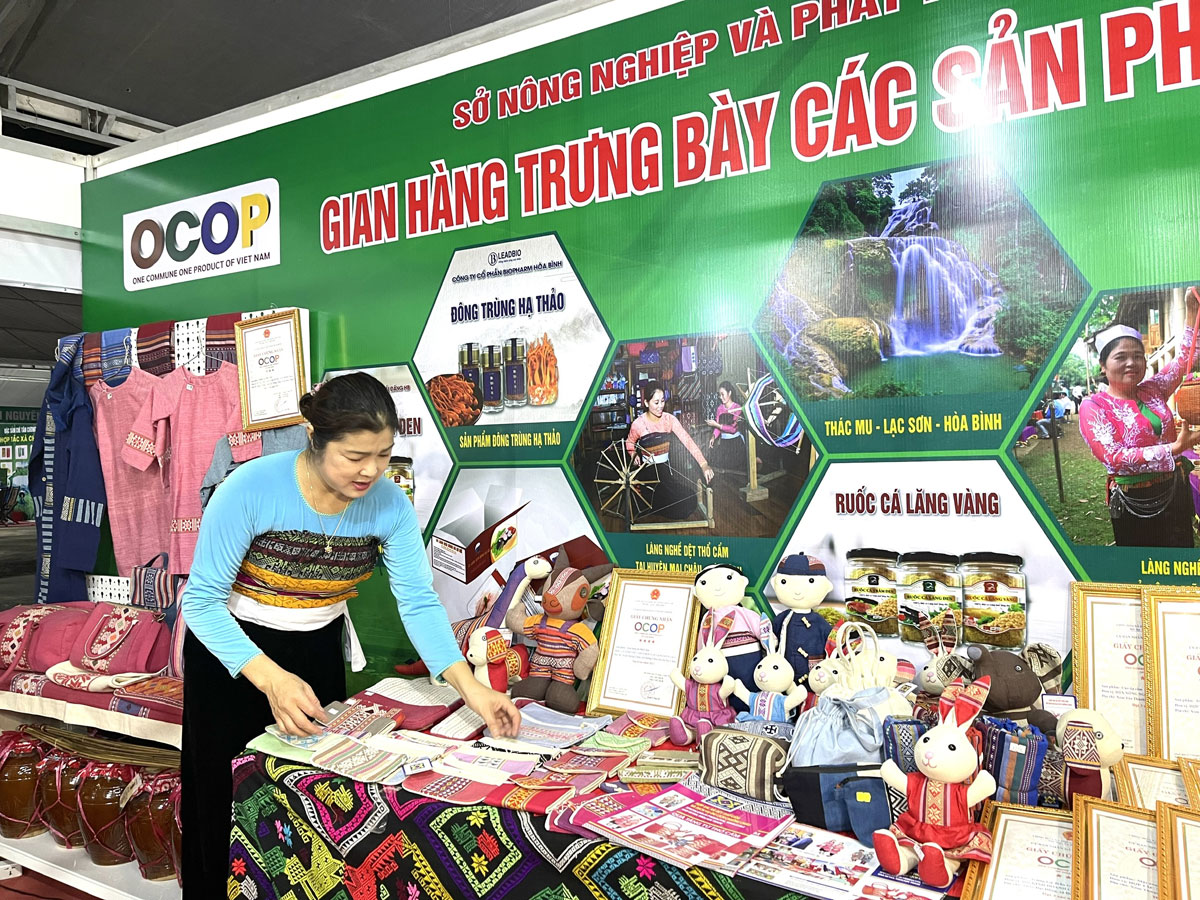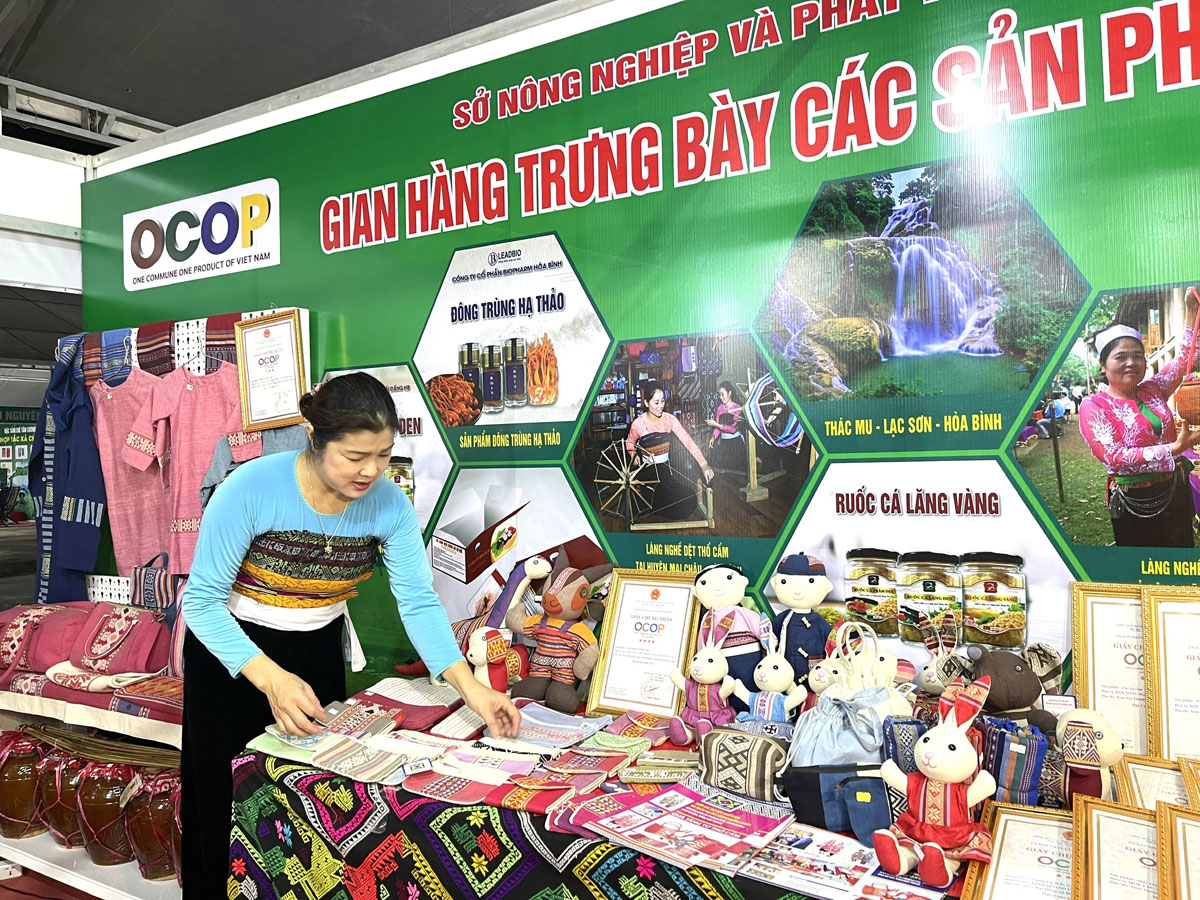
In order restore brocade weaving of the Thai ethnic group, with the support of the Japan International Cooperation Agency (JICA), the Chieng Chau Brocade Weaving and Tourism Services Cooperative was established in Chieng Chau commune (Mai Chau district) in 2009.
The Chieng Chau Brocade Weaving and
Tourism Services Cooperative has joined exhibitions
and fairs to promote its
products and expand the market.
The cooperative has continued its operation
after the JICA project concluded, and in 2013 it registered for official
establishment in line with the Cooperative Law.
Its Deputy Director Vi Thi Oanh said developing
the craft has created jobs for local residents, while preserving traditional
values. Its members have made efforts in production and
optimised local tourism advantages to popularise products to both domestic and
foreign tourists.
The cooperative has expanded its operation,
generating jobs for tens of labourers whose monthly income ranges from 3-4
million VND (123.5-164.67 USD) each. Chieng Chau brocade products have been known to
many people, especially foreigners, through fairs and exhibitions throughout
the country.
Moreover, the cooperative has coordinated with
local authorities and the farmers’ association of Chieng Chau hamlet to form a
Thai brocade weaving group within the cooperative, which aims to utilise the
existing resources, bring together weaving lovers, restore the traditional
craft, and raise income for local ethnic minority women.
After two years of operation, the group now
gathers 10 members whose skills have been improved significantly, contributing
to increasing productivity, fulfilling orders of domestic and foreign
customers. Most importantly, the members have enjoyed stable income and
improved living standards.
Pham The Anh, Chairman of the Mai Chau Farmers
Association, said the cooperative will further support the cooperative in
promoting the image of the group through exhibitions, fairs, television
channels and social networks.
Hoa Binh province has carried out multiple programmes and initiatives to revive its cultural heritage which has gradually fallen into oblivion through the ebbs and flows of history.
The most prominent and defining feature in the prehistoric era of Hoa Binh is the Hoa Binh Culture. The Culture was first discovered in Hoa Binh. The significant prehistoric culture represents not only Vietnam but also Southeast Asia and southern China. Through excavations of cave sites in the limestone regions of Hoa Binh, French archaeologist M. Colani introduced the world to a "Stone Age in Hoa Binh province – Northern Vietnam" in 1927. On January 30, 1932, the First Congress of Far Eastern Prehistorians, held in Hanoi, officially recognised the Hoa Binh Culture.
Known as the "Land of Epic History”, Hoa Binh province, the gateway to Vietnam’s northwest, boasts a strategic location and a unique cultural tapestry woven by its ethnic minority communities.
The People's Committee of Luong Son District recently held a ceremony to receive the certificate recognizing Sau Communal House in Thanh Cao Commune as a provincial-level historical and cultural site.
Recognising the importance of cultural heritage preservation in protecting and promoting the value system of Vietnamese culture, and serving socio-economic development in the new period, Party committees and local administrations in Hoa Binh province have identified it as a key task in the cultural development strategy. The province has been making efforts in mobilising resources, creating consensus among people and engaging ethnic communities in preserving and promoting cultural identity.
Hoa Binh province has captured growing attention both domestically and internationally for its distinctive cultural heritage and rich history. Most notably, it has been renowned for its famous Hoa Binh culture, considered the cradle of ancient Vietnamese civilisation. Looking ahead to significant milestones in 2025 and the 140th anniversary of province establishment in 2026, Hoa Binh Newspaper presents a comprehensive overview of the province's development across economic, social, cultural, tourism, and security domains.



